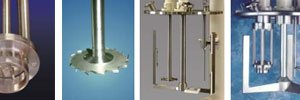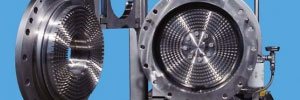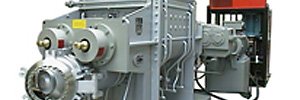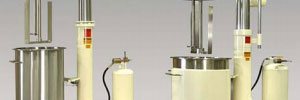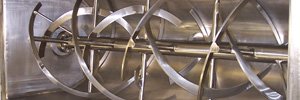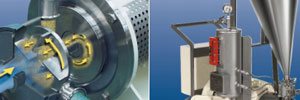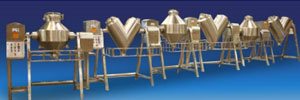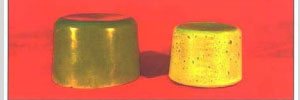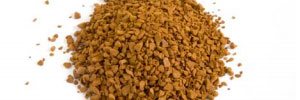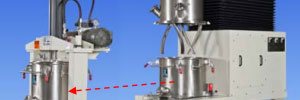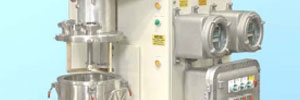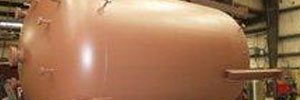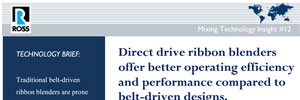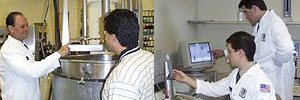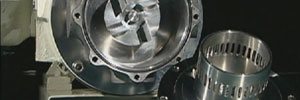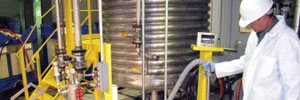Mixing Technology Insights
Mixing Technology Insights offer a brief look into ROSS' products, process expertise and market strengths. The reports delve into how the equipment can be used to improve your process and to add to your bottom line. ROSS strives to provide its customers with up to date information covering new technology in the industrial mixing and blending industry.
Select a specific product, process or market to view a list of related Insights:
Select Product
Select Process
Select Industry
- Recommended Mixing Equipment for Cleaners and Degreasers
Mixing is a critical step in the production of degreasing and cleaning formulations because complete dissolution/dispersion of the surfactants, builders and additives directly impacts the end product’s efficacy and performance. - Recommended Mixing Equipment for Sunscreen and Sun Tan Lotions
Mixing is a critical step in the production of sunscreen, largely because proper dispersion of the active ingredients and additives directly impacts the end product’s efficacy and stability. - Recommended Mixing Equipment for Polyvinyl Alcohol Solutions
Polyvinyl alcohol (PVOH, also referred to as PVA) is a versatile polymer that plays multiple roles in the manufacture of adhesives, sealants, cosmetics, paper, textiles and many other products. - Recommended Mixing Equipment for Polishing Compounds
A wide range of polishing and finishing compounds are formulated for different surfaces and applications. - Recommended Mixing Equipment for Emulsion Adhesives
Water-based emulsion adhesives serve multi-purpose uses in packaging, construction, textile and other applications. They bond plastic, coated papers, wood, metal surfaces, ceramics, concrete, glass and other substrates. - Recommended Crutchers & Mixing Equipment for Detergent Slurries
Different types of mixing equipment are utilized in the various stages of detergent production. One proven design is the ROSS Multi-Shaft Mixer which is commonly used as a “crutcher” or final mixer where the surfactants, builders, fillers and additives are all blended together. - Rethink your reactor design.
Chemical processes accomplished in conventional stirred tank reactors can be optimized by switching to a multiagitator system capable of high speed dispersion or dissolution, as well as superior heat transfer and efficient turnover even at elevated viscosities. - Multi-viscosity mixing in a
Triple-Shaft Mixer
This bulletin provides a step-by-step look at a typical multi-shaft mixer application which demonstrates the system’s processing flexibility in terms of mixing, heating, cooling and deaerating batch material at different viscosity stages. - Mixing viscous suspensions
Solid-liquid suspensions are prepared in different types of mixing equipment, depending on viscosity and shear level requirements. This bulletin presents some mixer solutions for efficient and consistent dispersion of solid raw materials into a viscous liquid. - Choosing the right anchor agitator for your multi-shaft mixer
Multi-shaft mixers are typically equipped with a low-speed anchor agitator which promotes laminar bulk flow and uniform batch temperature. Optimizing the design of this anchor agitator helps to ensure maximum mixing efficiency and processing flexibility. - Processing techniques for
multi-agitator systems
This bulletin discusses some processing techniques for mixing in a multi-agitator system. - Basics and benefits of
dual-shaft mixers
Dual-shaft mixers provide a combination of laminar agitation and high speed dispersive mixing robust enough to batch viscous solutions, dispersions, suspensions and emulsions that are several hundred thousand centipoise.. - Sanitary mixing in multi-agitator systems
Multi-shaft mixers are versatile systems used in the production of food, beverage, pharmaceutical and medical products. This bulletin discusses a few equipment features commonly supplied on multi-shaft mixers intended for sanitary applications. - Cost-effective processing of
viscous mixtures
Multi-agitator systems equipped with independently controlled drives are highly efficient at producing good turnover and imparting shear to a viscous batch. In particular, the dual-shaft mixer is a versatile and cost-effective system used for processing a wide variety of viscous formulations. - Improve safety in your mixing
room.
This bulletin discusses some practical and technical solutions for improving safety in the mixing area.. - Conserve raw materials in a scalable R&D mixer.
Scalable mixing equipment allow R&D scientists to conserve expensive ingredients while following a repeatable, consistent agitation method that can be easily replicated in pilot or production scale. This bulletin presents some R&D mixers and their smallest recommended batch volumes. - Mixing highly filled compounds
Obtaining a good dispersion of fillers into a mixture is critical to end product quality. Highly filled, viscous compounds can be successfully prepared in multi-shaft or planetary mixers.. - Optimize heat transfer in
your mixing operation.
Temperature plays a very important role in many mixing processes – it can dictate viscosity, solubility, reaction rates and other parameters that directly affect mixing performance. This bulletin identifies some strategies for optimizing heat transfer during mixing. - Multi-agitator mixer/reactors
Multi-agitator mixers are ideal for reaction processes that require intense mixing, high speed dissolution, emulsification, deagglomeration or heating/cooling of viscous liquids. - Scale-up of batch mixers
Successful scale-up of specialty mixing equipment often relies less on straightforward formulas and more on empirical data and experience. This bulletin discusses some practical tips and considerations useful in the scale up of batch mixing operations.. - Shorten your dissolution time by switching to a multi-agitator mixer.
Dissolution processes can be optimized through the use of multi-agitator mixers which provide a combination of low-speed blending, high shear mixing, particle size reduction and superior heat transfer. - Consider the advantages and disadvantages of scrapers.
Consider the advantages and disadvantages of scrapers.
The use of scrapers in batch mixing operations helps improve product homogeneity and heat transfer efficiency. However, there are cases wherein scrapers are not recommended such as in the processing of abrasive applications or highly viscous, sticky materials.

